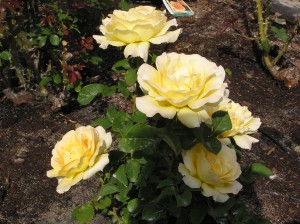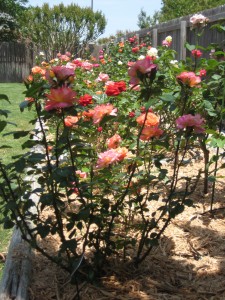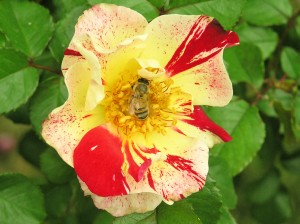
I would like to coin a new gardening phrase. Pruning post traumatic stress disorder (PPTSD) I have it, it’s real, I suffer every President’s Day. It occurred from having pruned right after President’s Day in Texas. President’s Day is supposed to be the last day of the danger of a deadly killing frost in Zone 8. Don’t you believe it. I relive the horror and the loss of 19 new rose bushes and having to re-prune 200 roses every President’s Day.

Temperatures dipped to 8 degrees on March 10th well after the safe time to plant and prune. I lost all my new bushes and all the newly pruned bushes stimulated by my early pruning had to be pruned all over again. Well, enough with my cheerful stories. This erroneous information was passed on to an unwitting northerner who grew up in the frozen tundra region on the frigid shores of Lake Michigan in Northern Illinois. Since today is President’s Day I thought I would cheer you all up and tell you again: Don’t Prune Too Early.

Here is a primer on pruning. It’s the best tips I’ve come up with over the years as we get ready for the season of pruning.
Depending on the season and upon where you live pruning time can come between the middle of January and the end of April. The idea is to do it soon enough that you will not be cutting off too much new growth, and late enough that you will not promote premature growth. Usually this is just when the buds begin to swell, and then if you do not get a late frost the bushes will be off to a good start.
Pruned late, even after new growth starts, the canes are cut to a swollen dormant bud and the bush will do just fine, so it is probably better to prune late than too early. As I preach to often do to my disorder PPTSD. Late-pruned bushes will bleed, but this has not been shown to be harmful to roses. Bleeding interferes with sealing cut ends but I stopped sealing smaller canes, with no increase in cane borer problems.

In addition to removing dead or diseased canes, there are several reasons for pruning. You want to remove non-productive branches and make room for ones that will make flowers. Remove crossing branches that clutter the bush or damage others. Open up the interior of the bush for ease in spraying and to promote good flowering stems. Remove non-productive canes at the base to promote growth of new vigorous canes. Finally, shape the bush to please you.
Before cutting out canes, you need to look at the branches they produced. If they have long, healthy, new branches, they should be left. If they have nothing but short twiggy non-blooming shoots, remove them. Sometimes there is not much left, but then perhaps the bush should be, as my mother used to say, “shovel pruned†and removed from the garden. We are told to reduce the number of canes to 3-5, but this is not necessarily a good guide.

Here are my tips:
1.    Wear tough protective clothing such as denim with long sleeves. It won’t snag as easily as some other fabrics.
2.    Wear thorn resistant gloves such as plastic coated garden gloves, or ones made of flexible leather.
3.    Watch where you put your hands and forearms. Thorns can penetrate almost any fabric I’ve used in the garden. I’ve had thorns penetrate the soles of my shoes, be careful.
4.    Invest in a small pruning or keyhole saw, they are essential for cutting larger canes and getting into tight spaces.
5.    A fairly large cane can be cut with hand shears if the cane is bent gently away from the shears, but I prefer to use a good pair of loppers rather than wrestle with the cane.
6.    Hold the shears so that the blunt blade is on the part to be cut off.
7.    Cut to an outside bud on upright-growing bushes or to an inside bud on spreading type bush. Cut to a bud pointing in the direction you want the branch to grow, the top bud usually will produce the dominant shoot.
8.    Cut to about ¼†of the bud, on a slight slant away from the bud. Cut shorter, the new shoot can break off in the wind, any longer causes unsightly die-back.
9.    If you feel you should seal cuts, use Elmer’s glue, I usually just seal large canes.
10. Leave as many canes as are hearty and have space to grow without crowding and are very well shaped.
11. Learn to grasp the cane gently and very carefully with a slight circular motion.
12.  If you cut or accidentally knock off a branch you meant to leave don’t let it spoil your day. It will brow back.
13. Do not prune once-blooming roses until they have bloomed.
14. Prune miniature roses like hybrid teas and floribundas, if you have the time and patience.
15. Old Garden Roses (OGR) are too diverse in nature to lay down rules. If you know the variety its best to research online for the best pruning for your OGR. In general, the best rule for pruning OGRs for the first two or three years is, “Don’t.â€
Awesome post! Have been wanting to prune my roses for the last two weeks. I must hold out until the 2nd week of March. I want magnificent blooms for the Birmingham Rose Show, Mother’s Day Weekend! Your roses are gorgeous!